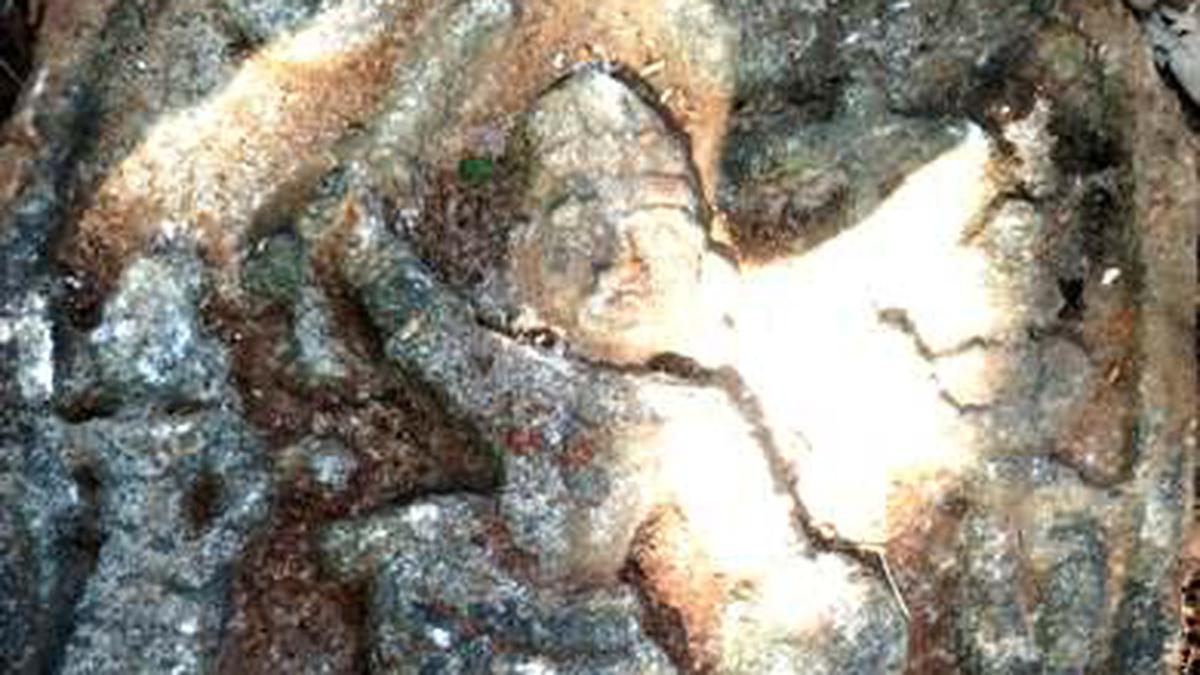
Hero stone from 15th-16th century with inscription in Kannada script found near Kundapur
The Hindu
The inscription opens with an invocation of Lord Ganesh, simply as ‘Shri GaNadhipathaye Namah, Projothpatti Savatsara, Shu 10 lu’ and mentioned that Lavamaaluva and Valeya, a servant (name lost), hatanaage (died). Someone (name lost) erected this hero stone. Be it well (shubhamasthu).
A hero stone (veera kallu) with an inscription in Kannada script used during 15-16th century has been found at Ulturu-Kattemane, near Gulladi in Kundapur Taluk of Udupi district in Karnataka.
According to T. Murugeshi, a retired Associate Professor of Ancient History and Archaeology, Mulki Sundaram Shetty College, Shirva, Udupi district, the stone was discovered during an exploration in and around Gulladi on a request by Raghuram Shetty of Gulladi.
The rectangular stone slab, which is about six feet high, contains a sculptural panel at the top. Below this panel is an inscription engraved in four lines. It is written in Kannada script of 15-16th century characters.
The inscription opens with an invocation of Lord Ganesh, simply as ‘Shri GaNadhipathaye Namah, Projothpatti Savatsara, Shu 10 lu’ and mentioned that Lavamaaluva and Valeya, a servant (name lost), hatanaage (died). Someone (name lost) erected this hero stone. Be it well (shubhamasthu).
The figures depicted in the panel are very interesting. In the centre, a hero is seen standing in veerasana (a certain pose ), raising his right arm with a sword, which is pointed towards the sky. In the left hand, he holds a shield or Guraani. This figure is in royal attire with a kirita (crown) as his head gear. Above this figure, are the moon on right and Sun on the left. On the left of the central figure, a servant is holding an umbrella with a royal insignia. On the right, another servant is seen stabbing himself by his left hand. In the right hand, he holds a shield, Mr. Murugeshi said.
“The figures in the panel have very beautifully narrated an event, that a member of a royal family died in an unknown battle. At that time, his servant also died with his master by stabbing himself,” he explained.
This stone is worshipped as Bobbaryana Kallu by the local people, the historian said.













